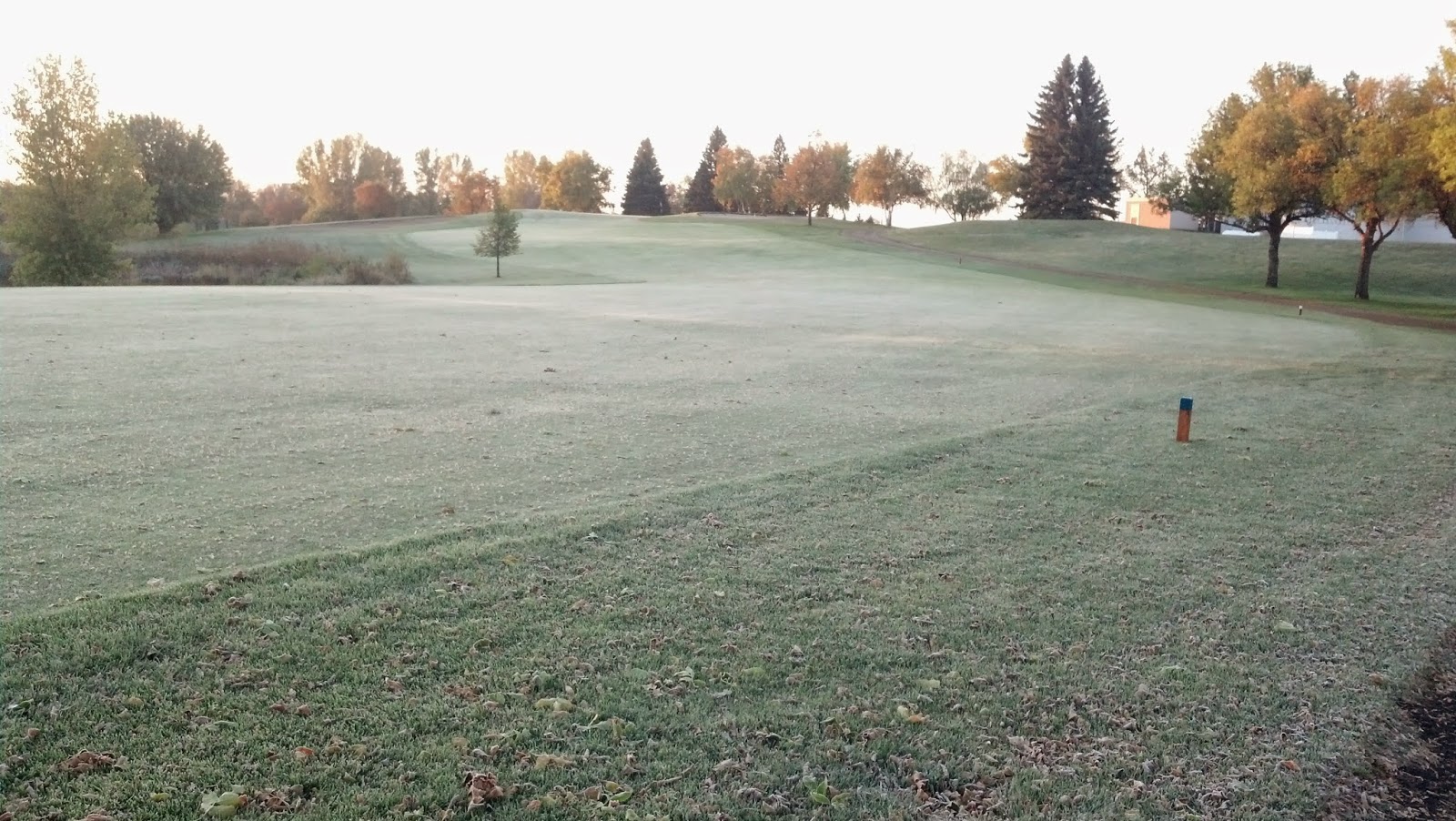It is no secret that over the years we have struggled with 6 green. Even the first year that I showed up here at GFCC in 2011, it was evident that there had been a lot of sod patches installed in it the year prior. However, more than ever, this year has been a real challenge.
There are a few factors in play that lead to 6 green performing much worse than the others.
First, the green is almost completely Poa annua. However, we made a solid dent in the that issue earlier this spring when we interseeded an aggressive amount of bentgrass into it.
Secondly, and most importantly, the green is completely full of cottonwood roots underneath of it. At least a few times a week when we cut a cup in 6 green we find cottonwood roots in the bottom of the hole. While a lot of our greens more than likely have some tree roots under them, the magnitude of roots that is underneath of 6 green is the real issue. The solid line of 15 old growth cottonwoods just 30' left of the green is simply too much. All those roots take all of the water and nutrients that we apply to that green, suck them down through the soil profile, and send them 100' up in the air to the cottonwood leaves. Whenever the weather gets even a little hot and dry, 6 green is always the first one to wilt and show stress.
 |
Cottonwood roots sticking up in the bottom of
a hole we cut for a cup in 6 green |
The issues this year with the green started almost immediately in the spring. Shortly after the snow melted, and before the ground thawed out and we had a chance to charge our irrigation system, we experienced a brief warm and dry spell. The turf has very little roots first thing in the spring after coming out of winter, and that short dry spell, combined with the cottonwood roots aggressively sucking up moisture, caused the green to wilt and kill the Poa almost immediately.
While we did a serious reseeding project on the green back in early June, it was both successful and unsuccessful at the same time. We succeeded in increasing the bentgrass population in the healthy parts of the green, but the bare areas on the green had very little success. While lots of new bentgrass seedlings did germinate in the bare spots, they were quickly destroyed. We were as careful as we could be with that green, but with all the constant mowing and rolling we perform on the greens over the summer, the new seedling simply got too beat up in the thin areas.
This fall however we are going to try something new, and relatively dramatic, in an effort to ensure that 6 green is in much better shape next summer.
Today we performed a process referred to as "root pruning" on the row of mature cottonwoods to the left of the green. We used a trencher to cut and sever all the cottonwood roots along the edge of the cartpath, about 15' from the edge of the green. This process will effectively kill all of the tree roots that are currently under the green. I have never done this before, but from having talked to a lot of other Superintendents that have performed this process, it sounds as if the effect on the health of the turf on the green should be dramatic. Furthermore, from what others have told me, this process should have no negative effects on the health of the trees either.
 |
| Our trench was about 200' long and 3' deep. |
 |
A view of all the cottonwood roots we cut through.
Some roots were easily 3" in diameter, |
The positive impact on the health of the turf on 6 green should be huge after having completed the root pruning. However, we still have a few bare spots on the green that we have been struggling to grow in all summer. With the slow down in golf play, along with the cooler fall weather, we took the opportunity last week just after aeration to slit seed the entire green and do some hand topdressing on the bare spots.
Essentially, we are going to treat 6 green as a brand new green for the rest of the fall. We will be fertilizing it more, and watering it regularly throughout the day in order for all the bentgrass seed to germinate and start to grow.
 |
| Slit seeding Alpha bentgrass into 6 green at a fairly high rate. |
 |
| Close up of slit seeder lines |
 |
Extreme close up, if you look very carefully you can see the tiny
bentgrass seeds laying in the groove. |
However, the most important part of this process, is that we will be removing the entire left side and back of 6 green from play. We will not be mowing or rolling any of those areas regularly this fall as well. Once the weather gets cold, we may even use some covers to keep the new seedlings warm and growing. In fact, I would prefer if people don't even walk on that part of the green as we try to repair all of the damaged areas. We will continue to mow the front, right, and middle of the green and keep the pin location in that those areas the rest of the fall in order to keep the hole in play.
I realize that this a fairly aggressive solution, but in the 4 years that I have been here, 6 green has never really been any good. Every year we baby it with extra fertilizer and water, but it only takes one small slip up on the wrong day and an entire season worth of hard work seems to vanish in an instant (by going straight up the trunk of a cottonwood tree.)
Please be patient with the process this fall as we try to ensure that 6 green is one of the best ones on the course next golf season.


















































